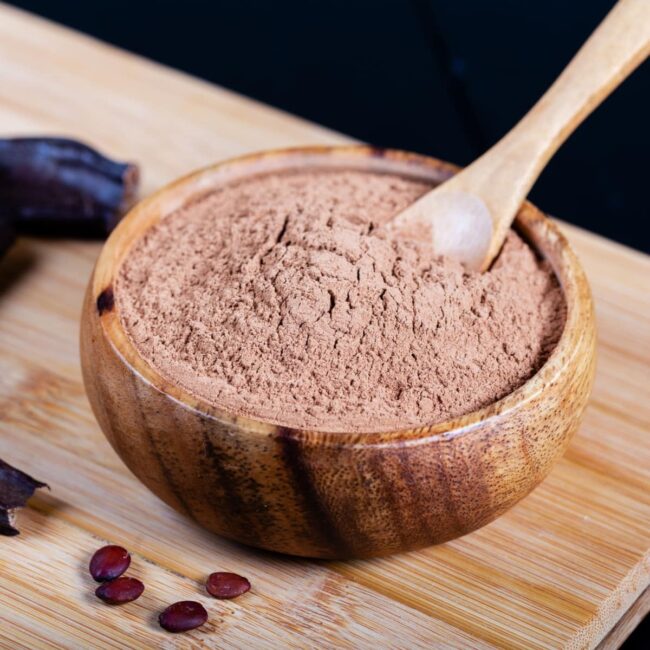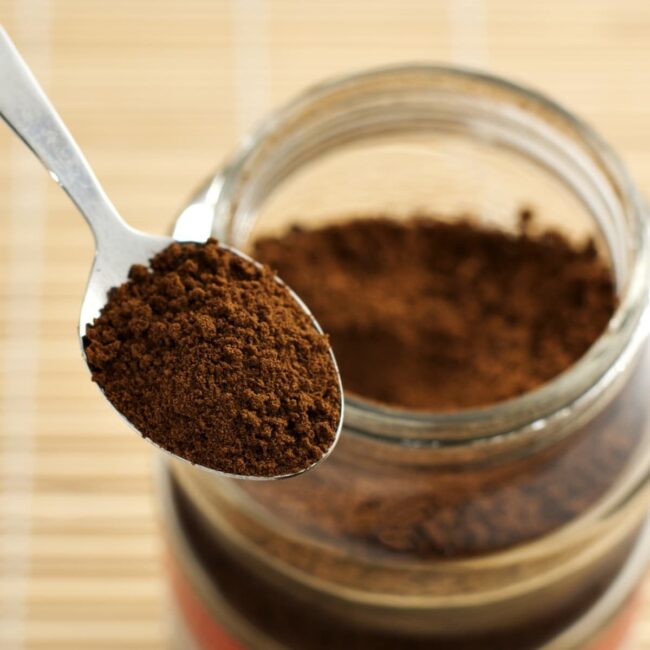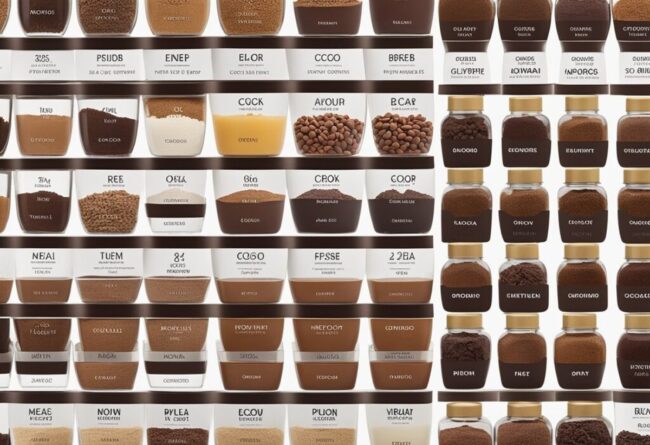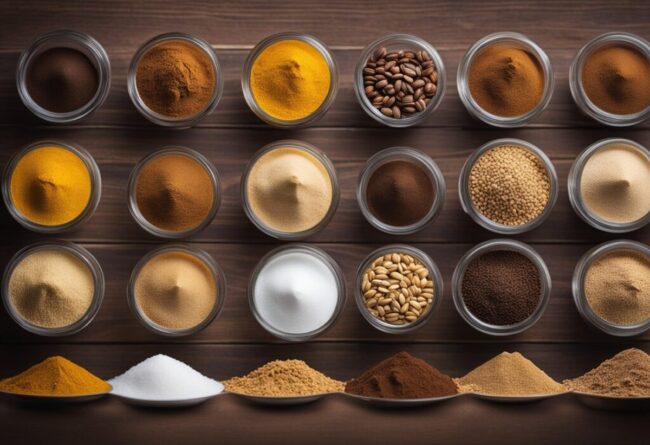3 Rich Alternatives to Cocoa Powder
Cocoa powder adds a deep chocolatey richness to baked goods, beverages, and confections.
When an alternative is needed, powdered chocolate blends, melted chocolate, and unsweetened cacao can serve as effective replacements.
Darker choices intensify the cocoa essence, whereas lighter options lean toward a subtle sweetness.
The fat content and consistency should align with the original ingredient.
Cocoa Powder Explained
Cocoa powder provides rich chocolate flavor in baking and beverages. Its depth enhances everything from cakes to homemade hot chocolate.
Cocoa Powder Ingredients
Cocoa powder originates from cocoa beans, the seeds of the Theobroma cacao tree.
These beans contain both fat and non-fat solids.
After roasting and processing, cocoa butter is extracted from the solids, resulting in cocoa powder.
Typically, this powder has a fat content of about 10-24%, with most of it being rich in antioxidants that offer various health benefits.
Two main varieties are available: natural cocoa powder and Dutch-process cocoa powder.
Each type provides unique flavors and uses in baking or cooking.
Different Cocoa Powder Types
Understanding the differences among cocoa powders is crucial for successful baking.
Black cocoa powder, a variation of Dutch-process, appears nearly black and offers a milder flavor due to its extensive alkalization.
Dutch-process cocoa powder features a darker hue and smoother taste, as its natural acidity is neutralized with an alkaline solution.
In contrast, natural cocoa powder retains a light brown color with a strong bitter taste because it lacks any additives or treatments.
Each type serves unique purposes in recipes that can significantly affect both flavor and texture in baked goods.
Choosing the right one ensures delicious results every time.
Cocoa Powder Alternatives You Can Use
Cocoa powder adds rich flavor to many recipes. Various alternatives exist for those seeking different tastes or dietary options.
Chocolate
Substituting cocoa powder can be simple with chocolate in various forms.
Unsweetened baking chocolate or dark chocolate works well for this.
A tablespoon of cocoa powder can easily transform into one ounce of these chocolates.
Adjusting sugar levels may be necessary since different chocolates have varying sweetness.
Melting the chocolate beforehand ensures a smooth texture when mixed into your recipe, preventing any clumps from forming.
Enjoy experimenting with these delicious alternatives!
Carob Powder
Carob powder serves as a well-liked alternative to cocoa powder.
This ingredient comes from the carob plant and offers a naturally sweeter taste with its distinct flavor.
Using it in recipes is straightforward; just replace cocoa powder with an equal amount of carob powder.
People who have chocolate allergies find this option especially helpful, as it provides a tasty substitute without the concerns associated with chocolate.
Caffeine-free enthusiasts also appreciate this choice for its enjoyable qualities and versatility in various dishes.
Carob’s unique profile makes it worth considering for any kitchen experiment.
Other Cocoa Alternatives
Exploring substitutes for pure cocoa powder opens up exciting options in the kitchen.
Instant coffee or espresso powder can add a unique flavor; use half the amount of cocoa called for in your recipe.
Black cocoa offers a rich taste, so combine it with natural cocoa using equal parts of each, cutting the total amount in half.
Dutch-processed cocoa serves as an excellent alternative when recipes require baking powder; simply match it cup-for-cup with natural cocoa.
These alternatives allow creativity while considering different dietary needs and preferences without sacrificing deliciousness.
Cocoa Powder Substitute Traits
Cocoa powder substitutes mimic its deep flavor while offering unique characteristics. Choosing the right alternative depends on texture and sweetness.
Taste Combinations
Exploring substitutes for cocoa powder can reveal exciting alternatives.
Carob powder offers a naturally sweet taste with a gentle chocolate flavor, lacking the bitterness found in cocoa.
Dutch-processed cocoa provides a smoother and less acidic chocolate experience, making it milder on the palate.
For some recipes, using actual chocolate can work as an alternative; however, this choice may alter both texture and sweetness in your dish.
Understanding these differences helps create delicious baked goods tailored to your preferences while maintaining enjoyable flavors throughout each bite.
Choosing the right substitute enhances overall satisfaction in cooking and baking experiences.
Acid Levels and pH
The final result of your recipe can change based on the pH level of cocoa powder substitutes.
Natural cocoa powder has an acidic pH between 5 and 6, which helps it react with baking soda to create a rise in baked goods.
Carob powder, on the other hand, is neutral with a pH close to 7 and does not have the same leavening properties as cocoa.
Dutch-processed cocoa powder has been treated to reduce its acidity, giving it a higher pH of around 7 to 8.
When swapping this for natural cocoa, be careful since its different acidity could alter how well your dish rises or sets.
Understanding these differences ensures better baking results every time.
Comparing Fat Levels
Understanding the differences in fat content among cocoa powder substitutes helps in choosing the right one for your recipe.
Carob powder closely matches cocoa with a low fat level, making it an excellent choice if you aim to keep your dish light.
Dutch-processed cocoa powder, while still low in fat, may have slightly more than natural options.
Chocolate presents a different challenge; its higher fat content can change both texture and richness significantly depending on the type used.
Unsweetened baking chocolate serves as a better option when aiming for lower fat levels similar to cocoa powder's typical range of 10-12%.
Knowledge of these substitutes allows for smarter decisions that enhance flavor and maintain desired characteristics in your dishes.
Recipe Substitutes Guide
Adjustments are essential when swapping cocoa powder for melting chocolate in recipes.
Melting chocolate has higher sugar and fat levels, which means reducing the recipe's sugar and butter is necessary.
A good rule of thumb involves cutting down the sugar by one tablespoon for every three tablespoons of melting chocolate used.
For fats, decrease butter or oil by one tablespoon per three tablespoons of melting chocolate as well.
Another option includes using a mix of butter and shortening to maintain the right texture while balancing flavors effectively.
These simple changes ensure your dish remains delicious without losing its intended taste or consistency.
Health Factors to Think About
Understanding the health effects of cocoa powder helps balance flavor and nutrition. Its antioxidants and minerals provide dietary benefits.
Coffee and Healthy Compounds
Exploring alternatives to cocoa powder requires attention to health factors, especially caffeine and antioxidant levels.
Cocoa powder stands out for its high content of antioxidants, particularly polyphenols, which offer numerous health benefits.
Carob powder serves as a substitute but contains less caffeine and fewer antioxidants than cocoa.
Coffee or powdered green tea presents another option with higher caffeine levels while delivering different types of antioxidants.
Each choice brings its unique flavor profile along with distinct nutritional qualities worth considering for your recipes.
Effects on Inflammation and Circulation
Substitutes for cocoa powder can influence inflammation and blood circulation in the body.
Cocoa powder contains polyphenols that help reduce inflammation and enhance blood flow.
Carob powder serves as a gentler option for those with sensitive stomachs, even though its antioxidant benefits might not be as strong as cocoa's.
Coffee and powdered green tea provide good effects on circulation while also being rich in antioxidants, but they contain more caffeine.
Choosing the right substitute is important since some may lack the beneficial properties found in cocoa powder itself.
Always consider individual sensitivities when making your selection to ensure health benefits are maximized.
Diabetes and Minerals Overview
When selecting a cocoa powder substitute, personal taste and health matters come into play.
Cocoa powder is low in sugar, making it suitable for individuals managing diabetes.
Some alternatives may contain more sugar, which could be an issue for those monitoring their intake.
The mineral content also varies among cocoa and its substitutes like carob powder, so dietary needs should guide your choice.
Understanding the nutritional differences through comparison can help in this decision-making process.
Focusing on these aspects leads to a well-informed selection that aligns with both health goals and flavor preferences.
Homemade Alternatives and Mixes
Homemade baking blends offer a fun way to personalize the taste and ingredients of chocolate substitutes.
Adjusting proportions allows for unique flavors that fit individual preferences.
A basic chocolate mix combines two-thirds cup of cacao powder, one-third cup powdered milk, and half a cup of sugar; shaking these together creates a versatile blend for hot cocoa or baked goods.
For those wanting something creamy, mix two cups of milk powder with one cup raw cacao powder and three-quarters of a cup sugar; this chocolate milk powder is perfect for enhancing drinks or crafting custom hot chocolates.
Another option includes blending one cup each of chocolate protein powder and raw cacao with half a cup powdered milk; this nutritious mixture works well in shakes or baked treats.





